
South Korea’s 40km trail running race across Seoul’s highest mountains is a journey of exquisite peaks, parks and pain
- The horseshoe-shaped Five Peaks route, the most punishing race in city, passes along popular hiking routes and the magnificently rocky Bukhansan National Park
- Pine forests and temples give way to new apartment complexes and back to fortresses and pavilions as runners are gifted an ever-shifting scenic backdrop
Nervous figures stand about in the spectral gleam of street lights, some shyly glancing about, some conferring quietly. One grey-bearded fellow looks like a hermit in tights. Another is shuffling his feet, eating a samgak kimbap (rice triangle) under the kaleidoscopically painted beams of the Mount Buram Hundred-Year Gate.
I train my headlamp on the road passing through the wooden structure. Cherry and black locust trees disappear into the darkness. The cool night air carries a spring fragrance, like jasmine.
There’s nothing quite like running – or hiking – through a part of a city to get a feel for the place. I’ve entered an early May trail race starting in northeast Seoul, a city that was chosen as a capital 2,000 years ago because of its jagged shield of mountains.
Known to foreign runners as Five Peaks and to locals as Bul-Su-Sa-Do-Buk (after the first syllable of each peak’s name), the horseshoe-shaped route passes near the highest elevations in the metropolitan area. About half of its 40km (25 miles) is a thigh-grinding plunge through the magnificently rocky Bukhansan National Park.
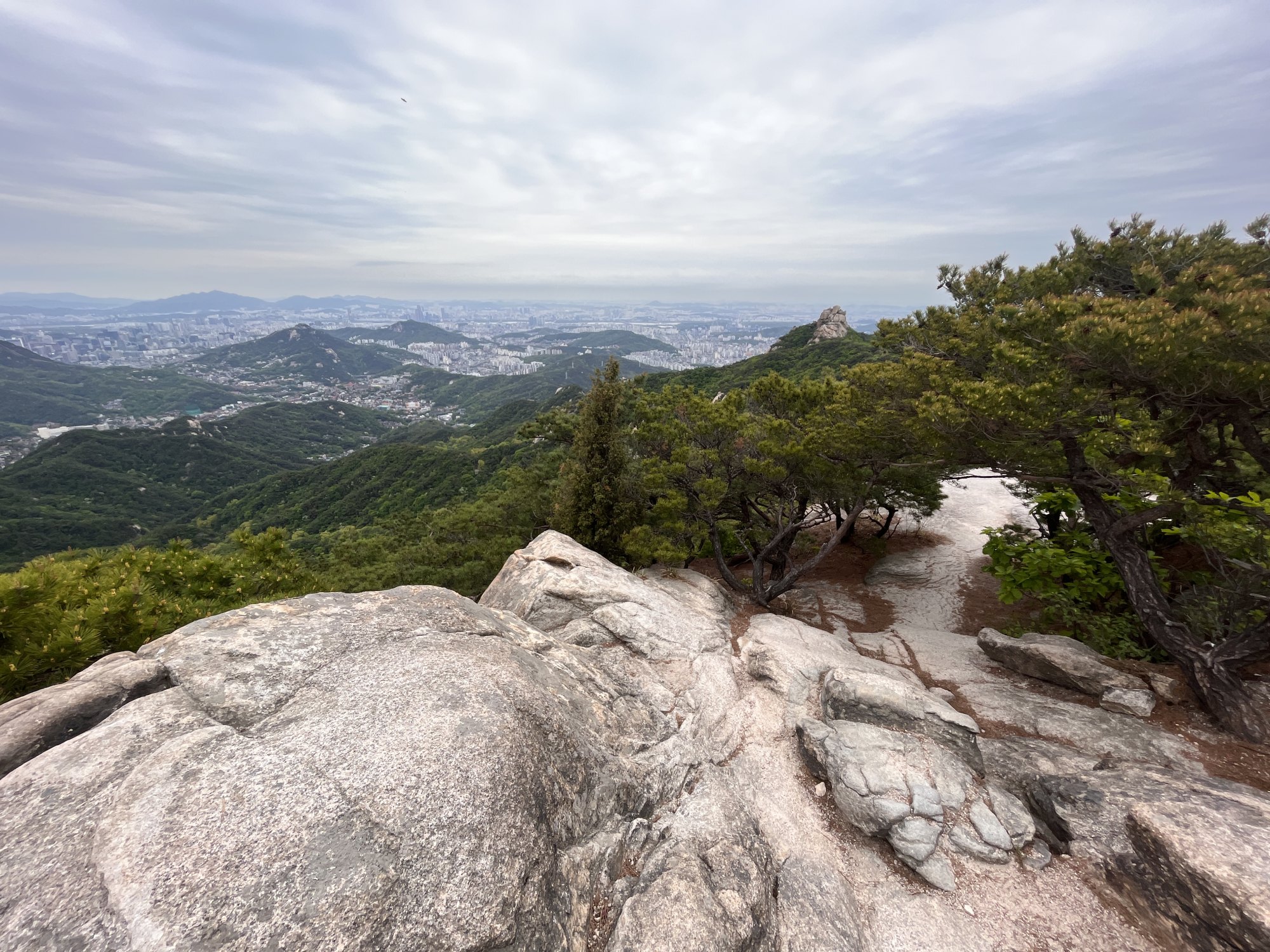
Fifteen minutes before start time, taxis continue to pull up and disgorge amateur athletes, who head for a boxy grey hatchback parked on the pavement with a table flush against the tailgate. Here, Korea Trail Runner Association head Park Chung-gyu, 72, hands out race bibs – all are welcome, although Google Translate would probably be needed by non-Korean speakers to navigate the association’s website.
Since the start of the pandemic, major trail races in South Korea, such as the Korea 50K and The North Face 100, have been forced to offer “virtual” formats, with entrants having to choose their own participation time and route. Park, though, managed to hold eight normal races in 2020 and 10 in 2021, all relatively small-scale.
A trip to South Korea’s new Legoland resort and surrounding Chuncheon city
With headlamp fully charged, shoelaces double-tied, energy gels stashed in running pack, route uploaded to watch and chafing points slicked with petroleum jelly, I step forward to join a pre-race group photo. Most of the 75 challengers are battle-worn men in late middle age but I’m glad to see some younger runners too.
A few minutes after 4am, we do a countdown and then start up the road. The asphalt shifts to soft, soundless pine needles, then to crunchy granite beads. Dust motes swirl in the beam of my headlamp. A swarthy, long-faced runner passes, catches up to the veterans in front, and asks who’s in first.
“A baby,” they say with Confucian resentment, referring to someone perhaps half their age.

Up a steep rock slab and we’re near the top of Mount Buramsan (507 metres). Vibrations from a hanging bell in a Buddhist temple ripple up through the darkness. A few kilometres more of pine forest and I begin to hear birds twittering and cooing. When a rosy glow forms on the horizon, it’s time to stash my headlamp.
On Mount Suraksan (638 metres) now, I run alongside the fence of a military firing range and through gullies carved into the forest floor by generations of hiking boots. The top is a phantasmagoria of eroded granite.
Not long after passing the day’s first hiker – a visored woman trudging up with hiking poles – I catch a foot on an exposed root, smashing a knee into gravel and ripping the shoe’s upper. Fearing that I’ll end up being listed as DNF (“did not finish”), I test out bloodied leg and shoe, find both serviceable and continue on a bit slower than before.
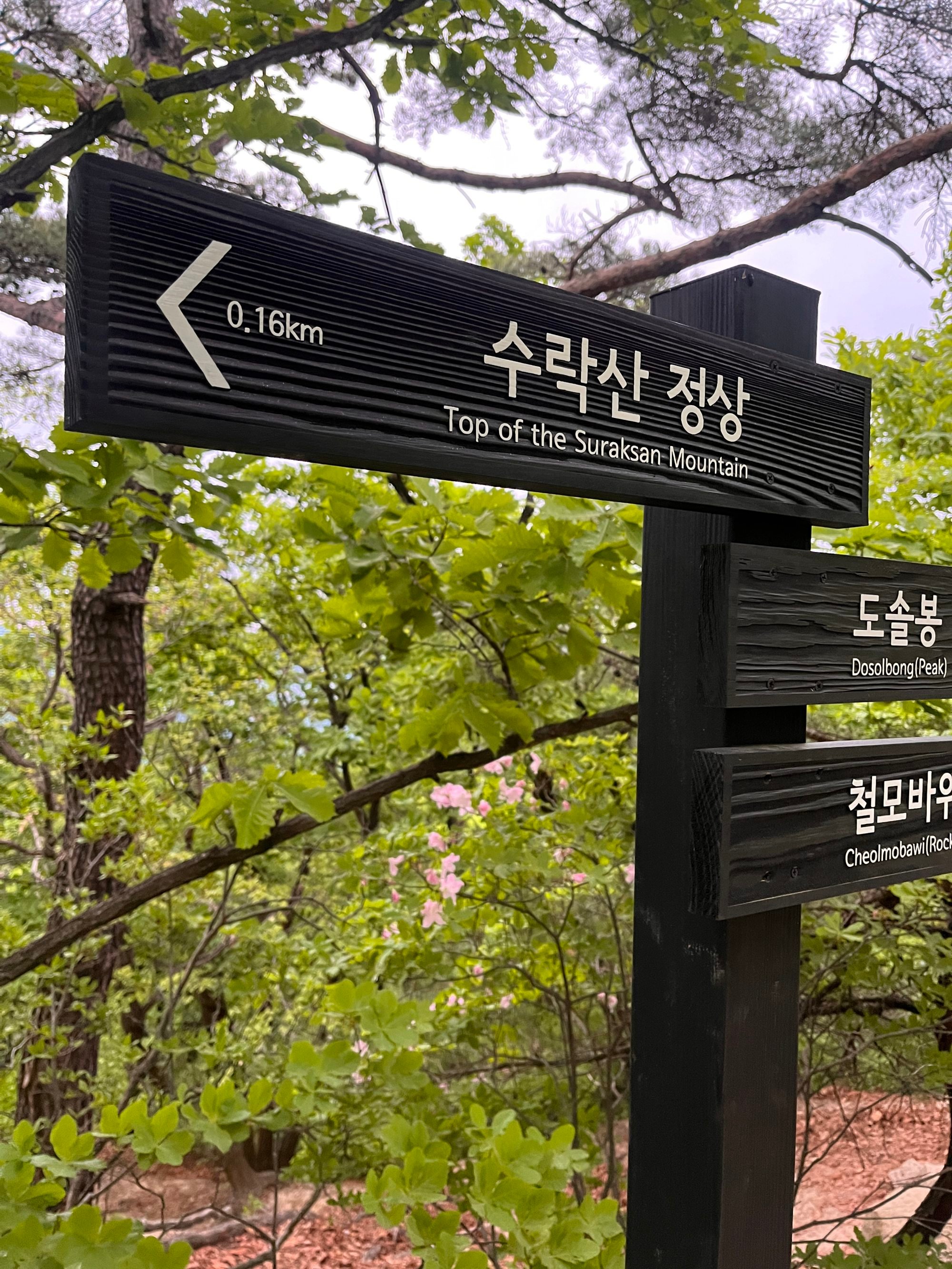
Descending to the satellite city of Uijeongbu, 15km into the race, I reach a humble drink station. A volunteer gives me hasty directions and I thread my way past new apartment complexes with names such as The Sharp and Prugio. Before long, I’m hiking up a steep road lined with lanterns in yellow, pink, sky blue and apple green, strung up to celebrate Buddha’s Birthday.
It’s only 7am but I’m beginning to drip sweat and am glad to see another drink station at Hoamsa (Tiger’s Den Temple). The helper offers rice cakes powdered with roasted soybean powder, just what’s needed for the steep, grinding ascent into the northern end of Bukhansan National Park.
This park holds the Guinness World Record for number of annual visitors per square foot, and I meet a number of them – hikers outfitted with gloves, bright apparel and trekking poles.
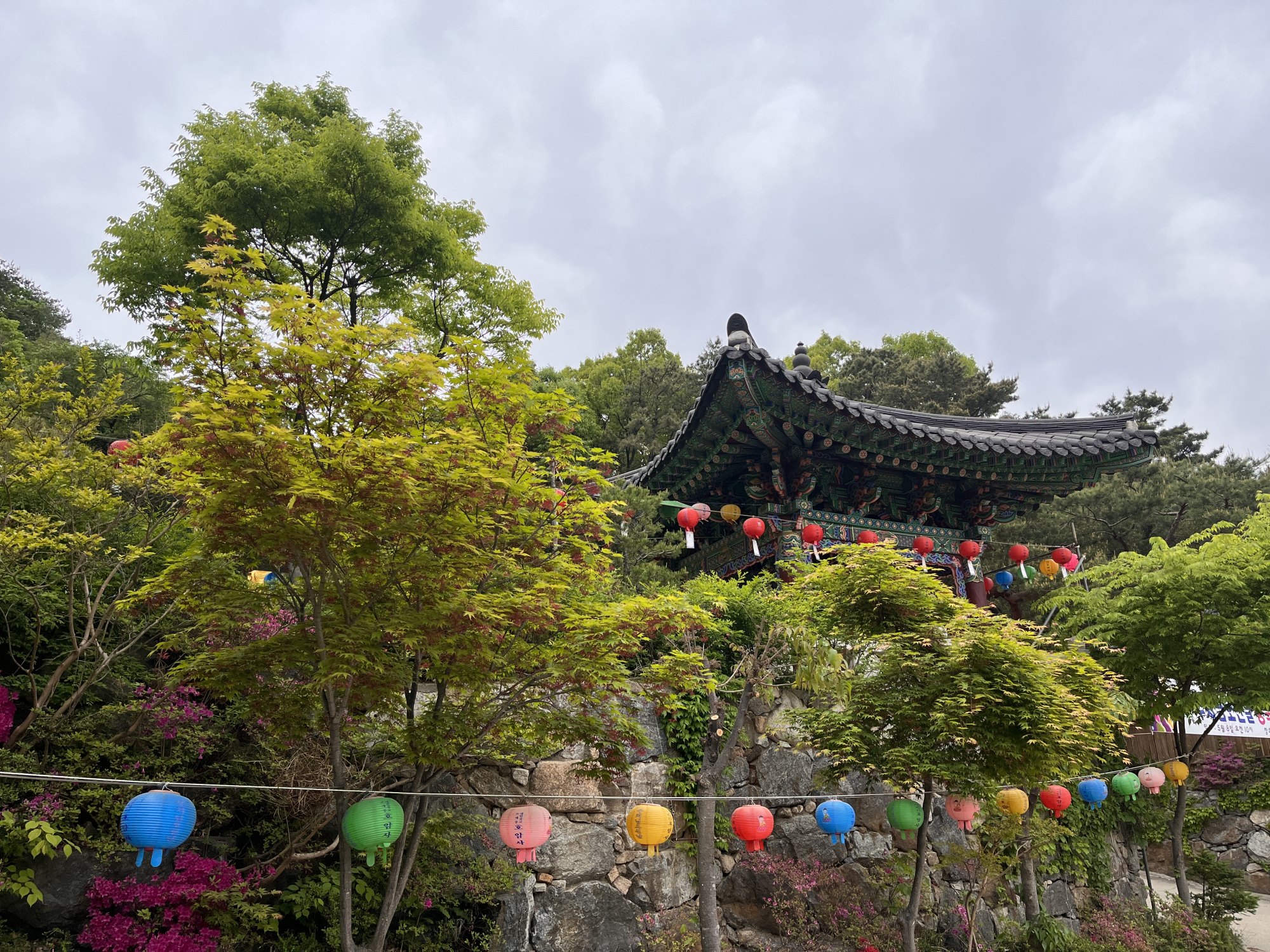
For an hour, I jog along a flat forested ridge, oak leaves fluttering. Far below – a world away – city sprawl fills the gaps between the hills. When I reach a seemingly endless set of stairs, two runners come up behind me. The older one, Kim Jeong-su, is wearing a shirt with jungle camouflage; the other, Park Seong-jae, looks young enough to be his son.
I manage to hold the lead through a small sea of rocky peaks (half expecting to see Taoist immortals and fairies) and along a narrow granite ridge claimed by jagged pines and neatly tapered junipers. But I fall behind after taking a wrong turn.
There are no markers for this race, and the trails are constantly diverging, so we end up going off course time and again, leapfrogging one another in the rankings, until Kim and Park begin widening their lead. I notice that they’re kicking up fine, grainy sand; I’m literally eating their dust. Then they’re gone.
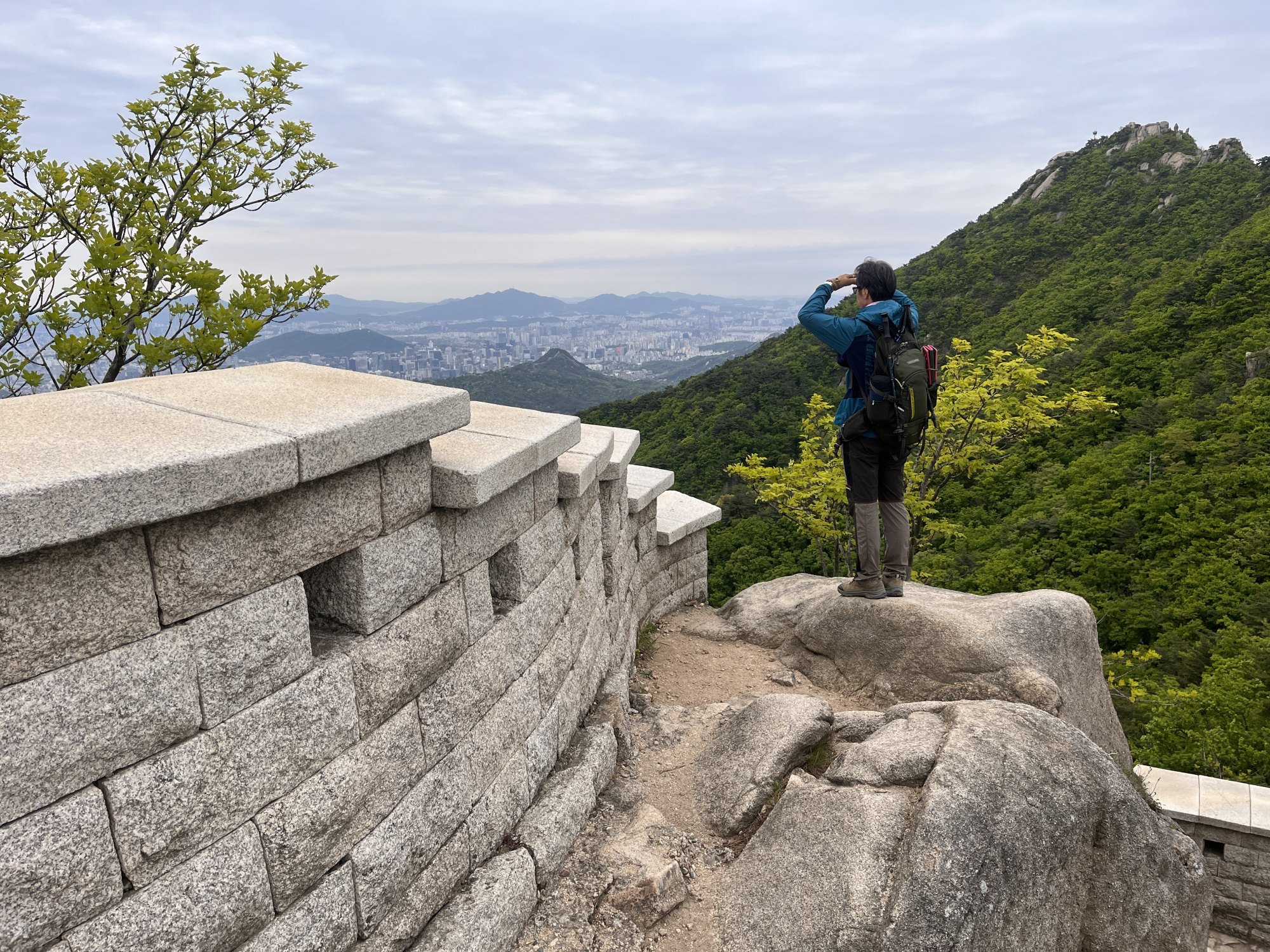
After one more descent to the city, I reach the high fortification of Daedongmun (Big East Gate) at 10am. Bukhansan’s fortress wall has three other main gates (North, South and West) and a number of smaller ones. The fortress was built along high ridges and encircles a valley in which a temporary palace stood, in case the royal court had to hunker down during an invasion. Within the fortress walls are several peaks.
The wall that currently stands was built in 1711, in the wake of devastating invasions by the Japanese and Manchu, and has been improved upon several times since.
A couple of hikers are resting near the gently curved eaves of the guard post, an open pavilion-type structure atop the Daedongmun gate, but by noon the shady plot will be crowded with raucous picnickers and vendors of ice pops and makgeolli (rice beer).
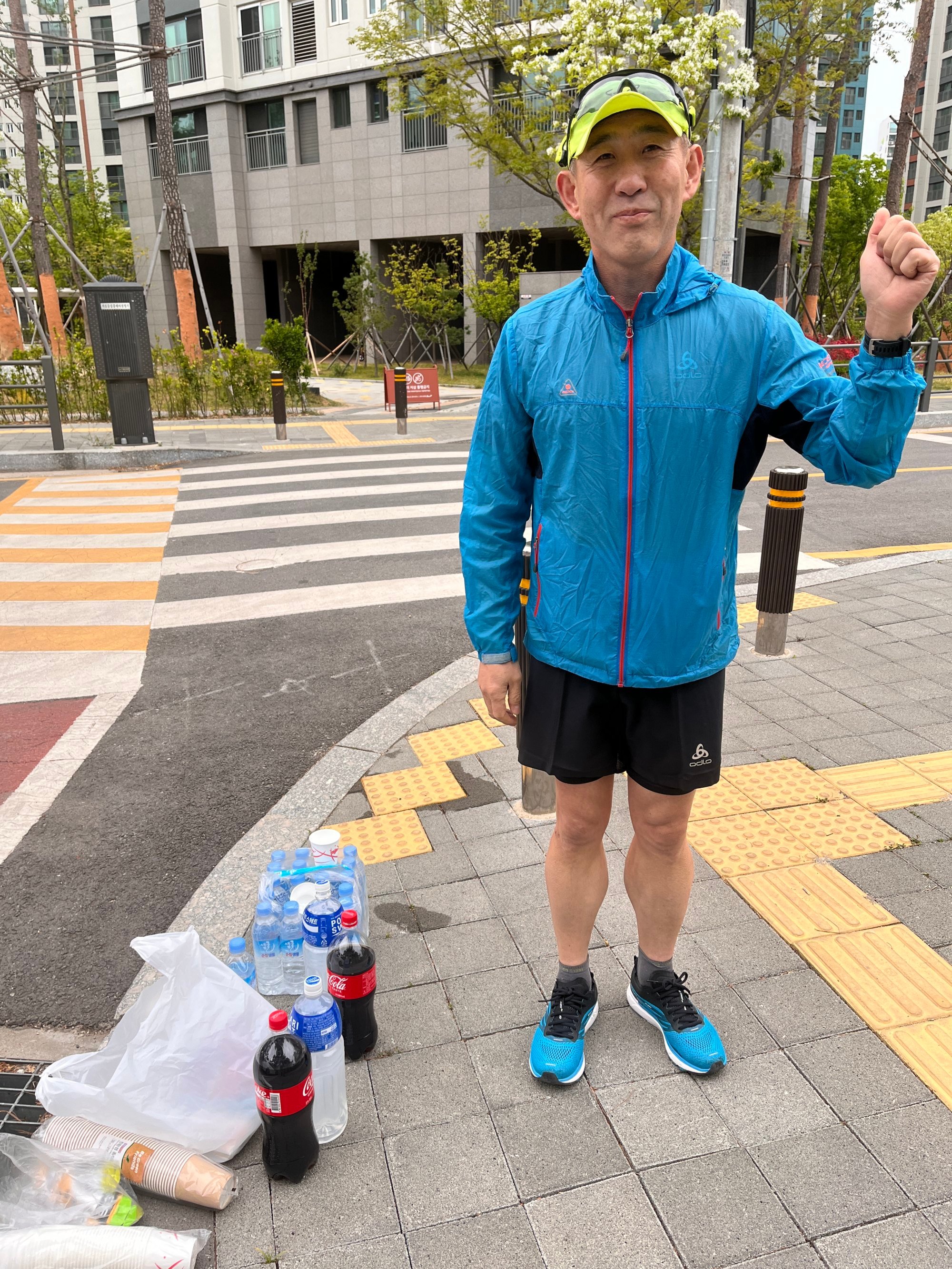
Punch-drunk, I hike and stumble alongside the ridiculously steep wall, realising too late that I should have taken the forest short cut. The weathered stone blocks curve this way and that like a giant serpent hemmed in by a lizard-green curtain of maple and oak leaves. Having run out of water, I am thankful the day remains overcast.
On the final descent, along a crumbling spur of the fortress wall, a greying man in a Seoul Marathon shirt shouts, “Hwa-ee-teeng” (“Fighting!”; meaning, “You can do it!”). More and more hikers cheer me on, and I bound down the last few sets of stairs like a deranged antelope, finishing in the Rose Garden, a humble park of benches, wooden pavilions and bushes, although the burgundy blooms have yet to appear. (The Rose Garden is a 10-minute walk from Bulgwang Station, in northwest Seoul.)
Putting my knee scrape to shame, Kim and the two Parks take turns showing off their scars, each one grislier than the last. After five peaks and seven-and-a-half hours of hiking or jogging, racking up more than 3,000 vertical metres, the shared experience has managed to bridge age gaps, language barriers and cultural differences.

